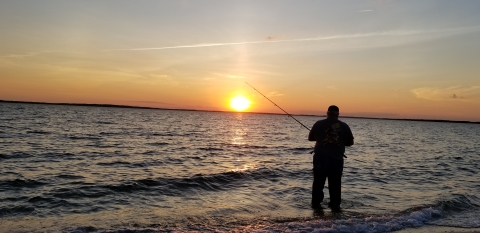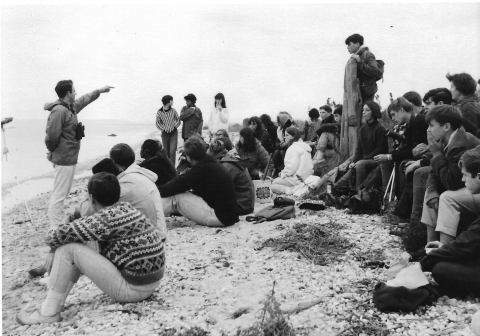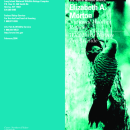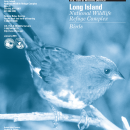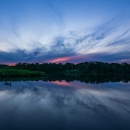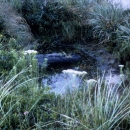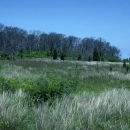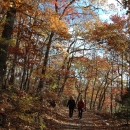Visit Us
Fees
An entrance fee is charged, which helps to protect wildlife habitat and maintain refuge trails and facilities. For groups over 12, you can request an entrance fee waiver by filling out a fee waiver form and returning to Ann Marie Chapman at AnnMarie_Chapman@fws.gov.
- Vehicle - $4.00
- Pedestrian/bicycle - $2.00
- Annual Refuge Pass (valid for 12 months from the month of purchase) - $12.00
- Non-private vans/buses - Up to 20 passengers - $15.00
Non-private vans/buses - Over 20 passengers - $25.00
Visitors can use a Duck Stamp (valid July 1 to June 30) to cover their entrance fee. Stamps are available at the Wertheim headquarters and/or local post office for $25.00 purchase.
For more information about the Federal Recreational Lands Pass program and the variety of passes that can be purchased online, visit https://www.fws.gov/service/federal-recreation-passes.
Know Before You Go
The long-standing practice of hand-feeding birds on the refuge has had unintended consequences for several of our endangered and threatened species like piping plover, American oystercatcher, and least terns. Feeding wild birds can do more harm than good. Bird seed and human food attracts predators like raccoons and rats, which will prey upon our most vulnerable and endangered species by eating chicks and eggs. Even natural foods like seed can lack nutrients which birds would otherwise obtain from insects, nutrients which wild bird chicks need. When visiting the refuge we ask that you put the well-being of wildlife before personal pleasure, and refrain from feeding any wildlife, or leaving any food behind.
Wild birds can carry diseases like avian flu and psittacosis, which pose a threat to human health and safety. If you observe dead and/or sick birds take photos and videos and document the location. Contact the refuge at longislandrefuges@fws.gov to report.
- The refuge is open ½ hour before sunrise until ½ hour after sunset.
- No pets are allowed on the refuge, their presence disturbs wildlife;
- Late October through early April offer the best times to view waterfowl on the refuge. The forests come alive in spring with the arrival of migratory songbirds; while chickadees, black ducks, wild turkey and white-tailed deer may greet you year-round.
- In order to protect sensitive nesting birds, a portion of the beach is closed from April – August. During that time, binoculars help you see the refuge’s beach-dependent wildlife.
- Mosquitoes and flies can be prevalent during the spring and summer. Be sure to bring bug spray.
- Poison ivy and ticks are found throughout the refuge. Stay on the trails to limit your exposure.
- Restrooms are located at the Visitor Contact Station at the start of the trail.
Points of Interest
- Hike the self-guided Wild Birds Nature Trail (1.2 mile) through woodland areas and onto the beach;
- Walk the beach for almost two miles along Jessup’s Neck Peninsula;
- Photograph white-tailed deer, turkeys and songbirds at close range;
- Observe a variety of threatened and endangered species including piping plovers; roseate, common and least terns; Kemp’s Ridley turtles and loggerhead sea turtles.
Activities
Fishing
Fishing is allowed from the shoreline. A free New York state salt water fishing license is required. Common fish species include striped bass, weakfish, Atlantic mackerel, flounder, bluefish, tautog, ling and eel blowfish.
Wildlife Viewing
Morton Refuge is an ideal spot for wildlife watching. Most visitors enjoy watching wildlife while hiking the Wild Birds Nature Trail. Wildlife have become acclimated to visitors and often go about their day without a second glance. Eastern wild turkeys, songbirds and chipmunks all can be seen along the wooded sections of the trail. Osprey can be seen flying overhead hunting for fish in the bay. In the winter, large groups of black ducks, bufflehead and common goldeneye can be seen floating in the bay. An elevated platform at the beach allows visitors an outstanding view of Little Peconic Bay, Noyack Bay and Jessup’s Neck Peninsula’s wildlife species.
Interpretation
Interactive, family-oriented activities are usually offered on Saturdays during the summer months. Occasional guided walks are offered during the course of the year. Please check the events web page for dates and times.
Environmental Education
Morton National Wildlife Refuge is in the process of developing a suite of curriculum-based, environmental education programs for various grade levels. Check back soon for updates.
Groups can contact our general email account to inquire about program opportunities.
Photography
As with wildlife observation, most visitors focus their cameras on the wildlife found in the forest. Yet there are plenty of photographic moments to be found on the beach too, including harbor seals in March!!
Related Documents
- Wild Birds Nature Trail Guide (out of print) (1.7 MB PDF)
- Long Island National Wildlife Refuge Complex general brochure (1.38 MB PDF)
Other Facilities in the Complex
The Long Island National Wildlife Refuge Complex consists of seven national wildlife refuges, two refuge sub-units and one wildlife management area wildlife management area
For practical purposes, a wildlife management area is synonymous with a national wildlife refuge or a game preserve. There are nine wildlife management areas and one game preserve in the National Wildlife Refuge System.
Learn more about wildlife management area . Collectively, the ten units are approximately 6,500 acres in size. Each unit is unique and provides a wildlife oasis amongst Long Island’s urban settings essential for the livelihood of migratory birds, threatened and endangered species, fish and other wildlife. The strategic location of Long Island in the Long Island Pine Barrens & along the Atlantic Flyway make it an important nesting, wintering and migratory stop over area for hundreds of species of birds.
Rules and Policies
Everything on the refuge is either a home or food for wildlife. Therefore, please remember…
- Please do not feed wildlife, it causes more harm than good
- Do not leave bird seed along the trail—it attracts unwanted pests that can be harmful to birds & people.
- ‘Take only pictures, leave only footprints.”
- Use official trails only.
- Respect refuge boundary signs, closed areas and private property.
- Keep pets at home. Their presence disturbs wildlife.
- Keep a walking pace. Running triggers a flight response in wildlife.
- Keep your distance—respect nesting wildlife.
- Pack your garbage out with you.
- Keep noise levels low. You will have a better chance at seeing or hearing wildlife!



